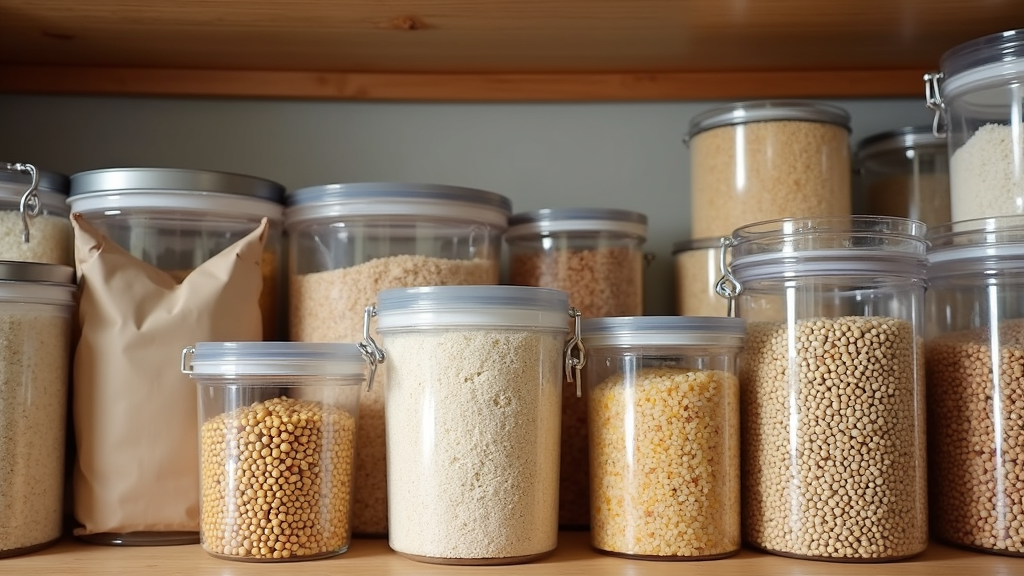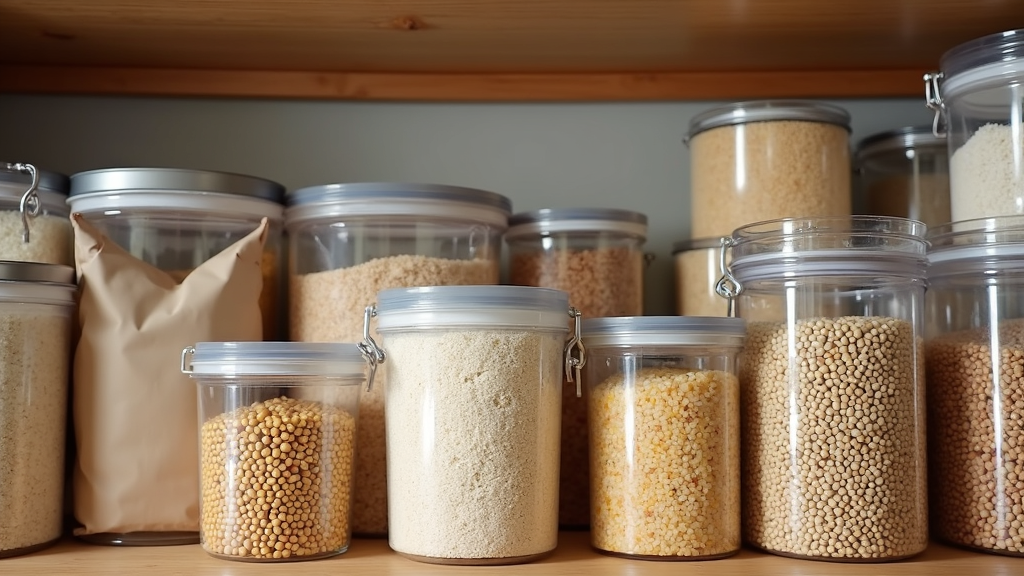Building a dependable long-term food storage supply might seem a bit overwhelming at first, mainly because of all the brands and buzzwords you spot. I remember staring with buckets and pouches, wondering if these would really last for decades if I actually needed them. After plenty of research and some real taste testing in my kitchen, I’ve picked up practical tips for sorting the reliable brands out from the rest. Here are the core things to look for when choosing food storage brands that genuinely live up to their promises.

Shelf Life Testing & Third-Party Certification
Shelf life claims get tossed around casually; labels might say “25 year” or even “30 year shelf life,” but not every brand puts these claims to the real test. Reputable brands run accelerated shelf life studies, simulating years of storage at controlled temperatures and humidity. When you see something like, “tested for 25 years at 70°F,” that’s a sign they take things seriously. I’ve seen a few top brands break down their shelf life processes, even showing charts and reviews from their own tests.
It’s a plus when brands get third-party certification, too. Labels such as ISO 9001 (for quality management), USDA Organic, or Non-GMO Project Verified show that outside experts have checked their processes. I always have more confidence when real documentation and standards are backing up the marketing claims rather than just reading catchy words on the package.
Packaging Integrity & Materials
There’s a clear difference between packaging that looks tough and packaging that actually protects food for the long term. I check for mylar pouches with multilayer aluminum barriers, heavy-duty #10 cans, or BPA-free plastic buckets with thick walls. Good brands use oxygen absorbers, nitrogen flushing, or vacuum sealing to remove oxygen and keep pests and moisture out.
If you’re shopping instore, seeing airtight seals and sturdy closures (like gamma seal lids) adds confidence. Online, I usually check product specs or check out real user photos and reviews for details on how containers hold up during shipping and long-term storage. If people share long-term experiences, especially after several years in their own pantries, I know I’m looking at a solid option.
Ingredient Quality & Sourcing
I’ve found that the most trustworthy brands are open about where they source their ingredients. These brands often spell out the country or region where grains, beans, or proteins are grown, and sometimes even share farming methods — like whether products are organic or non-GMO.
When sizing up ingredients, I prefer brands that keep things simple with minimal fillers, strange additives, or an overload of preservatives. Simple ingredients are usually better since you could end up relying on these foods for weeks or months. I’ve also noticed that brands sharing ingredient lists and sourcing details tend to rate higher with users for taste and reliability.
Nutritional Completeness
It’s tempting to only count calories per serving, but I dig into the macronutrient mix, too. Packages and listings should show protein, carbs, and fat content — plus vitamins like A, C, D, zinc, and iron. The best meal kits offer meals with a solid mix of nutrients. Some brands even spell out the amount of each micronutrient in a day’s meals, which is useful during emergency planning for families.
Just eating rice and beans can meet basic calories, but you’ll need to supplement for a balanced diet. Brands offering more all-in-one meal plans and super detailed nutrition breakdowns make prepping less stressful and healthier overall.
Taste, Texture & Rehydration Performance
If you’ve ever tried an uninspiring or rubbery emergency meal, you know taste and texture matter! I gravitate toward brands that talk about how they test food — some use standardized cooking tests with feedback from regular people. I check out brands that offer sample packs or let you buy pouches individually to try at home before buying in bulk.
Brands that throw in seasoning packets or simple recipes help keep meals interesting. Food has to be satisfying, especially in a tough situation, so taste is no small thing!
Brand Reputation & Track Record
The history of a company says a lot. I trust brands with decades selling storage food, especially those with loads of user reviews and mention in prepping communities. I also look for how transparent they are during recalls or when fixing mistakes. No brand is perfect; what matters is how they handle issues and support customers when things get rocky.
In addition, it’s worth checking how a company updates their product lines over time. Brands willing to update packaging, improve recipes, or respond to community feedback show commitment to both quality and customer satisfaction. This gives peace of mind that they’ll stand by their product if you run into any issues.
Supply Chain Resilience
When crises or global supply crunches pop up, some brands run out of stock fast. The best companies with multiple manufacturing spots (often in different regions) keep inventory moving. I scan recent user comments and prepping forums to judge if a company delivers orders quickly and reliably. Some brands openly explain their backup suppliers or alternate plans for stock shortages, which is a confidence boost.
Packaging & Portioning Flexibility
Food storage doesn’t need to be only in large size buckets. I appreciate brands giving options like single-serve mylar pouches for lunches or big #10 cans for family meals. This reduces waste when you only need small portions, and makes meal planning easier.
Clear labeling is a game changer. Best by dates in big print, simple prep instructions, and lot numbers help you rotate inventory. Some brands use color coding or symbols to mark outdated stock for first use, which keeps your system simple and effective.
Cost-to-Value Ratio
Choosing the lowest priced brand is tempting, but it’s rarely worth the risk. I compare price per calorie (especially adjusted for quality and nutrition density) or price per pound of protein. Weighing packaging quality and nutrition balance helps me spot real value.
If a brand offers prices that seem much too low, I pause to check for skipped safety testing or poor ingredient traceability. Consistent user reviews and steady performance reassure me before making any big buy.
Customer Support & Education Resources
I regularly lean on brands that make life simple for their customers. The better ones provide step-by-step guides for rotating inventory, storage tips on temperature and humidity, and helpful FAQs. Some even offer meal calculators and planning tools that make prepping a breeze.
Every time I have questions — about allergens, bulk orders, or best use for a food in an emergency — responsive customer service is a must. Brands that help you get things right show they care about more than the bottom line.
Extra Tips for Evaluating Food Storage Brands
- Shelf Life Documentation: Don’t just trust a sticker; ask for real test results or certificates from labs or standards organizations.
- Real-World User Reviews: Check prepping and emergency preparedness forums for honest feedback and photos after years in storage.
- Try It Yourself: Grab small packs before buying in bulk. Meals need to be easy to cook, filling, and should taste good.
- Check Recall History: Google the brand with “recall” to track down any past issues of contamination, mislabeling, or customer complaints.
Summary
Picking solid long-term food storage brands takes a little effort up front, but it makes preparing for the unexpected far less stressful. Focusing on brands with real shelf-life testing, sturdy packaging, and clear ingredients goes a long way. I seek out third-party certifications, a good mix of meal options, and detailed nutrition info. Brands with a history of reliability, good customer support, and open communication make for a safer investment — and much more peace of mind. Stick with these tips and you’ll be ready to choose food storage you can count on, no matter what comes your way.

